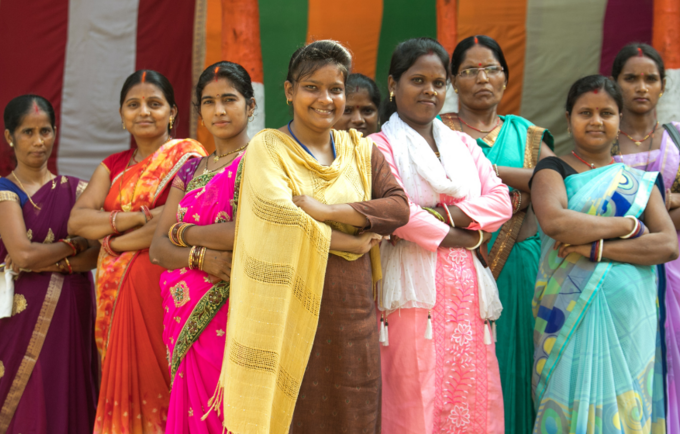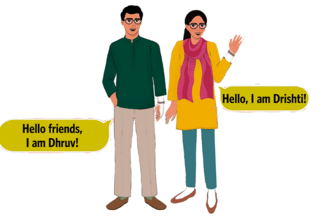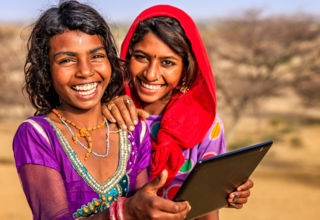By Andrea M. Wojnar (UNFPA India Representative and Country Director Bhutan)
The theme of this year’s World Population Day ‘Unleashing the power of gender equality: Uplifting the voices of women and girls to unlock our world’s infinite possibilities’ could not be more apt for India. When we unlock the full potential of women and girls – encouraging and nurturing their desires for their families and themselves – we galvanise half the leadership, ideas, innovation, and creativity available to societies. As the world’s most populous nation, the template for India’s women-led development - be it in science, technology, agriculture, education or healthcare- must also include reproductive autonomy at its core.
For far too long the world has been obsessed with population numbers and targets. Instead of ensuring reproductive autonomy for each woman, we obsess with total fertility rates; instead of ensuring that family planning services reach all those who want it, we obsess with what the ideal population size of a family, a community, a country and even the world ought to be. It is important to understand that there are no ideal numbers or figures.
Population stability comes when reproductive and sexual health decisions are free of discrimination, coercion and violence, that reproductive and sexual health services are affordable, acceptable, accessible and of high quality, and that women and couples are supported to have the number of children they want, when they want them.
On World Population Day, India deserves to be commended for its family planning initiatives despite many challenges, which aim to provide an increasingly comprehensive package of reproductive health services to every potential beneficiary with a focus on the provision of modern short and long-acting reversible contraceptives, permanent methods, information, counselling, and services, including emergency contraception.
India's commitment towards the Family Planning 2030 partnership includes expanding its contraceptive basket. The inclusion of new contraceptive options advances women’s rights and autonomy, leading to a spike in modern contraceptive prevalence. Access to timely, quality and affordable family planning services is crucial because unspaced pregnancies may have a detrimental influence on the new-born’s health as well as major effects on maternal mortality, morbidity, and healthcare expenditure.
The Indian government’s health, population and development programmes have shown steady progress over the years. Life expectancy at birth has significantly increased in India over the years. Compared to the 1990s, Indians are currently living a decade longer. In terms of maternal health, India has made impressive strides. The current rate of maternal mortality is 97 (per 100,000 live births) , down from 254 in 2004. Another triumph of these programmes is gender empowerment. Since the beginning of 2000, India has cut the number of child marriages by half. Teen pregnancies, too, have dramatically decreased. Access to vital services, including health, education, and nutrition, has also improved.
However, this progress has a fine print too. Many women continue to lack physical autonomy. According to the most recent National Family Health Survey (NFHS-5), just 10% of women in India are independently able to take decisions about their own health, and 11% of women believe that marital violence is acceptable if a woman refuses to have sex with her husband. Nearly half of all pregnancies in India are unplanned, as they are globally.
Advancing gender equality is not just about women - but also about populations as a whole. In ageing societies that worry about labour productivity, achieving gender parity in the workforce is the most effective way to improve output and income growth. And in countries experiencing rapid population growth, women’s empowerment through education and family planning can bring enormous benefits by way of human capital and inclusive economic development. More importantly, the focus on gender equality helps shift focus away from the notion of ‘population stabilisation’ to ‘population dynamics’ based on reproductive choices people make.
India has a significant opportunity to advance gender equality and grow its economy. In fact, raising women's labour force participation by 10 percentage points might account for more than 70% of the potential GDP growth opportunity ($770 billion in additional GDP by 2025).
The path to such a bright future is clear. Focusing on gender equality -centred growth, rights, and choices promises to help all achieve their aspirations. Gender equality can be ensured by making investments in a woman's life at every stage, from childbirth to adolescence to maturity. Engaging with women, girls and other marginalised people and formulating legislation and policies that empower them to assert their rights and take life changing personal decisions are the first steps in this direction.
This World Population Day is an opportunity to reaffirm our commitment to putting individual rights, particularly women's rights and well-being, at the centre of the population and development discourse. Gender-just approaches and solutions are the fundamental building blocks of a more prosperous India, and indeed the world.
As published in The Hindu - https://www.thehindu.com/opinion/op-ed/womens-reproductive-autonomy-as-t...



